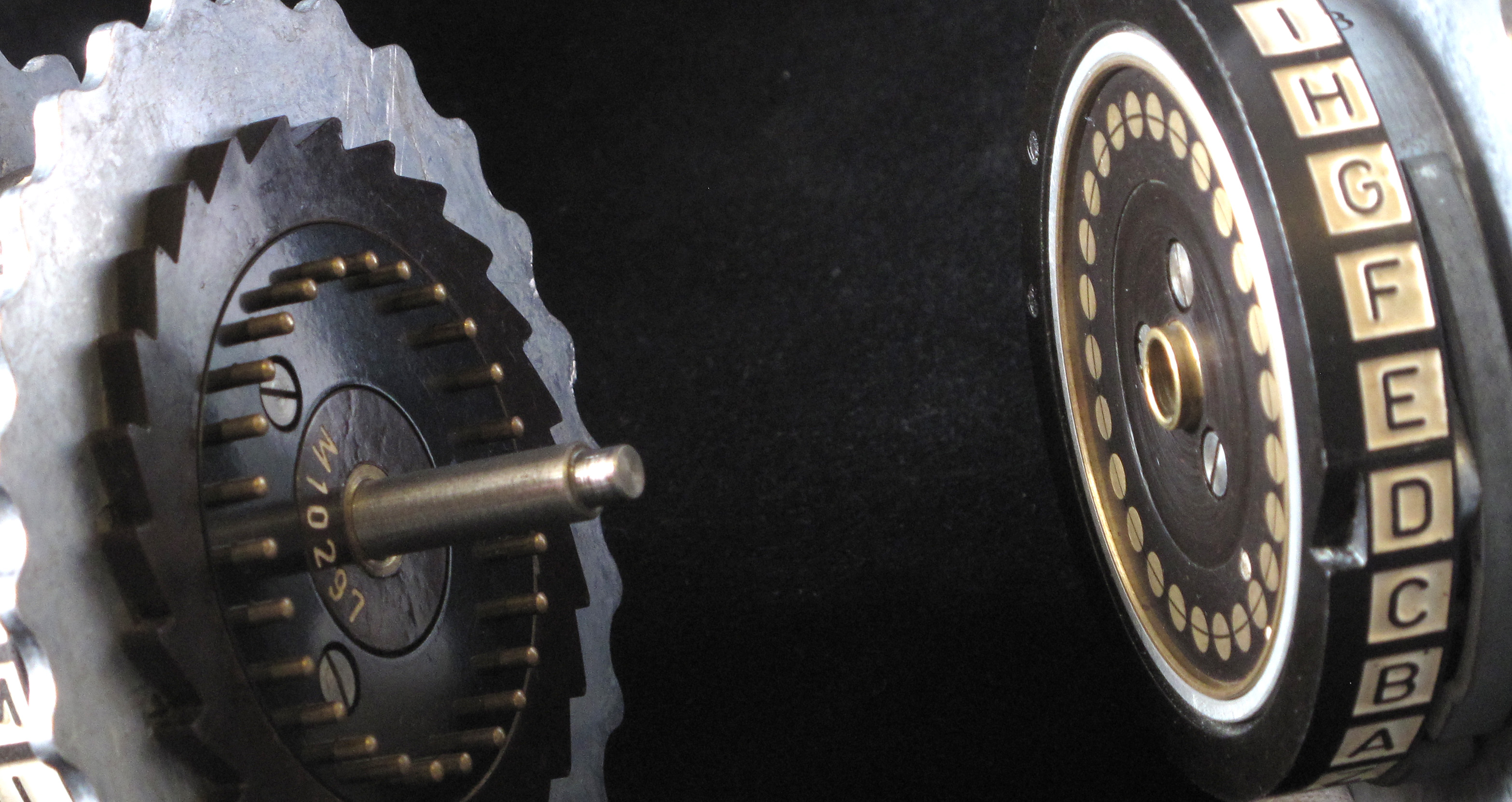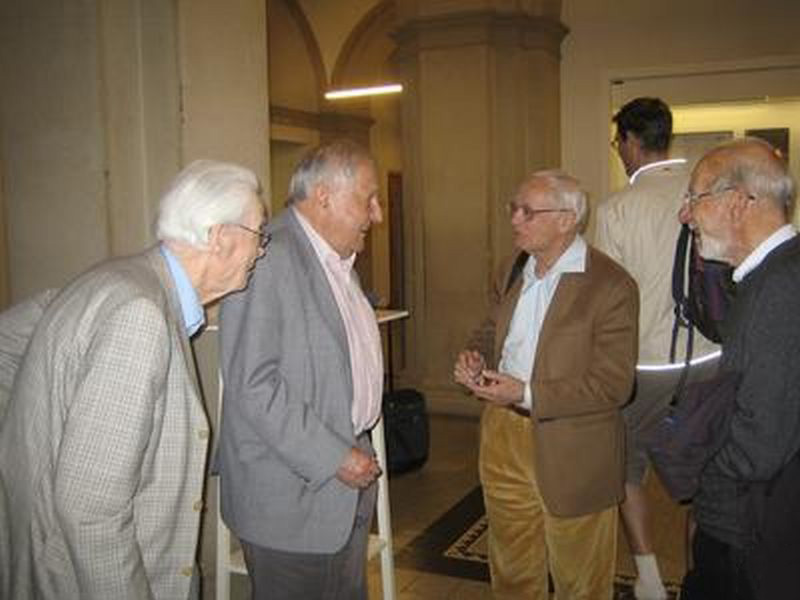|
Hut 8
Hut 8 was a section in the Government Code and Cypher School (GC&CS) at Bletchley Park (the British World War II codebreaking station, located in Buckinghamshire) tasked with solving German naval ( Kriegsmarine) Enigma messages. The section was led initially by Alan Turing. He was succeeded in November 1942 by his deputy, Hugh Alexander. Patrick Mahon succeeded Alexander in September 1944. Hut 8 was partnered with Hut 4, which handled the translation and intelligence analysis of the raw decrypts provided by Hut 8. Located initially in one of the original single-story wooden huts, the name "Hut 8" was retained when Huts 3, 6 & 8 moved to a new brick building, Block D, in February 1943. After 2005, the first Hut 8 was restored to its wartime condition, and it now houses the " HMS Petard Exhibition". Operation In 1940, a few breaks were made into the naval "Dolphin" code, but Luftwaffe messages were the first to be read in quantity. The German navy had much tighter procedure ... [...More Info...] [...Related Items...] OR: [Wikipedia] [Google] [Baidu] |
Cryptanalysts
Cryptanalysis (from the Greek ''kryptós'', "hidden", and ''analýein'', "to analyze") refers to the process of analyzing information systems in order to understand hidden aspects of the systems. Cryptanalysis is used to breach cryptographic security systems and gain access to the contents of encrypted messages, even if the cryptographic key is unknown. In addition to mathematical analysis of cryptographic algorithms, cryptanalysis includes the study of side-channel attacks that do not target weaknesses in the cryptographic algorithms themselves, but instead exploit weaknesses in their implementation. Even though the goal has been the same, the methods and techniques of cryptanalysis have changed drastically through the history of cryptography, adapting to increasing cryptographic complexity, ranging from the pen-and-paper methods of the past, through machines like the British Bombes and Colossus computers at Bletchley Park in World War II, to the mathematically advanced comp ... [...More Info...] [...Related Items...] OR: [Wikipedia] [Google] [Baidu] |
Hut 3
Hut 3 was a section of the Government Code and Cypher School (GC&CS) at Bletchley Park during World War II. It retained the name for its functions when it moved into Block D. It produced military intelligence codenamed ULTRA from the decrypts of Enigma, Tunny and multiple other sources. Hut 3 thus became an intelligence agency in its own right, providing information of great strategic value, but rarely of operational use. Group Captain Eric Malcolm Jones led this activity from 1943 and after the war became deputy director, and in 1952 director of GCHQ. In July 1945, General Dwight D. Eisenhower Supreme Commander of Allied forces wrote to Sir Stewart Menzies, Chief of the British Secret Intelligence Service (MI6) saying ''inter alia'': Development The "German Army and Air Force Enigma Reporting Section" was set up in January 1940. That name, however, was soon dropped in favour of "Hut 3" as a description both of the location and of the functions and this was retained when, ... [...More Info...] [...Related Items...] OR: [Wikipedia] [Google] [Baidu] |
John H
John is a common English name and surname: * John (given name) * John (surname) John may also refer to: New Testament Works * Gospel of John, a title often shortened to John * First Epistle of John, often shortened to 1 John * Second Epistle of John, often shortened to 2 John * Third Epistle of John, often shortened to 3 John People * John the Baptist (died c. AD 30), regarded as a prophet and the forerunner of Jesus Christ * John the Apostle (lived c. AD 30), one of the twelve apostles of Jesus * John the Evangelist, assigned author of the Fourth Gospel, once identified with the Apostle * John of Patmos, also known as John the Divine or John the Revelator, the author of the Book of Revelation, once identified with the Apostle * John the Presbyter, a figure either identified with or distinguished from the Apostle, the Evangelist and John of Patmos Other people with the given name Religious figures * John, father of Andrew the Apostle and Saint Peter * Pope ... [...More Info...] [...Related Items...] OR: [Wikipedia] [Google] [Baidu] |
Rolf Noskwith
Rolf Noskwith (19 June 1919 – 3 January 2017) was a British businessman who during the Second World War worked under Alan Turing as a cryptographer at the Bletchley Park British military base. Early life and education Noskwith's parents, Chaim (Charles) and Malka (née Ginsberg), were Eastern European-born Jews who set up a clothing manufacturing company in Germany. Seeing that the political and economic conditions were worsening in the Weimar Republic, they sold their business and emigrated from Germany to England in 1932, along with their children. The family created another textile company, Charnos, in Ilkeston, Derbyshire, England, that would become the basis of Noskwith's post-war life. Noskwith was educated at Nottingham High School and Trinity College, Cambridge. Service in Second World War Initially, he was not accepted for military service, but after his third attempt, he was accepted to work as a translator and cryptographer at the Bletchley Park facility. His fi ... [...More Info...] [...Related Items...] OR: [Wikipedia] [Google] [Baidu] |
Leslie Lambert
Leslie Harrison Lambert (11 November 1883 – 13 December 1941), known in public as A. J. Alan, was an English magician, intelligence officer, short story writer and radio broadcaster. At the beginning of World War II he worked in naval intelligence at Bletchley Park. Life and career Lambert, son of Thomas Harrison Lambert and his wife Kate, was born in Nottingham and went to Rugby School before training to be a surveyor. He then learned to be a magician and became a successful member of The Magic Circle, performing especially at society events. Lambert became a radio ham and at the start of World War I he volunteered to work at a coastguard station in Norfolk which was a centre for intercepting German radio transmissions. By November 1914 he was employed by the Admiralty at Naval Intelligence Room 40 although even until after his death official records said he had been working at the Foreign Office since 1909. , giving National Archive and Churchill Archive sources HW3/3 ... [...More Info...] [...Related Items...] OR: [Wikipedia] [Google] [Baidu] |
Rosalind Hudson
Rosalind Audrey Clare Hudson ( née Latham; 31 July 1926 – 7 July 2013) was a British codebreaker and architectural model maker. Early life Rosalind was educated at Adcote School, Shropshire. In her early years she developed a love for architecture. Being the granddaughter of Walter Aubrey Thomas, who designed the Royal Liver Building, Hudson also constructed architectural models. Hudson attempted to further her career in architecture at the Liverpool School of Art, but she eventually dropped out during World War II to join the Women's Royal Naval Service. Hudson was stationed in Bletchley Park and Woburn Abbey for the duration of the war. Career Bletchley Park Following training in the WRNS she was sent to Bletchley Park, home of the British government's the Government Code and Cypher School. Hudson worked in Hut 8 under cryptanalyst Alan Turing. She never discussed her work at Bletchley Park following the war. Florist After the war Hudson trained as a florist under Constan ... [...More Info...] [...Related Items...] OR: [Wikipedia] [Google] [Baidu] |
Peter Hilton
Peter John Hilton (7 April 1923Peter Hilton, "On all Sorts of Automorphisms", '' The American Mathematical Monthly'', 92(9), November 1985, p. 6506 November 2010) was a British mathematician, noted for his contributions to homotopy theory and for code-breaking during World War II. Early life He was born in Brondesbury, London, the son Mortimer Jacob Hilton, a Jewish physician who was in general practice in Peckham, and his wife Elizabeth Amelia Freedman, and was brought up in Kilburn. The physiologist Sidney Montague Hilton (1921–2011) of the University of Birmingham Medical School was his elder brother. Hilton was educated at St Paul's School, London."About the speaker"announcement of a lecture given by Peter Hilton at Bletchley Park on 12 July 2006. Retrieved 18 January 2007. He went to The Queen's College, Oxford in 1940 to read mathematics, on an open scholarship, where the mathematics tutor was Ughtred Haslam-Jones. Bletchley Park A wartime undergraduate in wartime ... [...More Info...] [...Related Items...] OR: [Wikipedia] [Google] [Baidu] |
Harry Golombek
Harry Golombek OBE (1 March 1911 – 7 January 1995) was a British chess player, chess author, and wartime codebreaker. He was three times British chess champion, in 1947, 1949, and 1955 and finished second in 1948. He was born in Lambeth to Polish-Jewish parents. He was the chess correspondent of the newspaper ''The Times'' from 1945 to 1985, after Stuart Milner-Barry. He was a FIDE official, and served as arbiter for several important events, including the Candidates' Tournament of 1959 in Yugoslavia, and the 1963 World Chess Championship match between Mikhail Botvinnik and Tigran Petrosian. He also edited the game collections of José Raúl Capablanca's and Réti, and was a respected author. He was editor of ''British Chess Magazine'' from 1938 to 1940, and its overseas editor in the 1960s and 1970s. Golombek also translated several chess books from Russian into English. On the outbreak of World War II in September 1939, Golombek was in Buenos Aires, Argentina, competing ... [...More Info...] [...Related Items...] OR: [Wikipedia] [Google] [Baidu] |
Joseph Gillis
Joseph E. Gillis (3 August 1911 – 18 November 1993) was a British-Israeli mathematician and one of the founders of the Faculty of Mathematics at the Weizmann Institute of Science, where he served as a Professor of Applied Mathematics. He made notable contributions to fractal sets, fluid dynamics, random walks, and pioneered the combinatorial theory of special functions of mathematical physics. Career Gillis was born on 3 August 1911 in Sunderland, in the north east of England. He studied at Trinity College, Cambridge, completing his doctoral thesis on "Some Geometrical Properties of Linearly Measurable Plane Sets of Points" under A.S. Besicovitch in 1935. During World War II he worked in Bletchley Park as a cryptographer. He taught maths at Queen's University Belfast between 1937 and 1947. In 1948 he immigrated to Israel and joined the Weizmann Institute of Science (then the Ziv Institute), where he, along with others, founded the Department of Applied Mathematics. He also ... [...More Info...] [...Related Items...] OR: [Wikipedia] [Google] [Baidu] |
Joan Clarke
Joan Elisabeth Lowther Murray, MBE (''née'' Clarke; 24 June 1917 – 4 September 1996) was an English cryptanalyst and numismatist best known for her work as a code-breaker at Bletchley Park during the Second World War. Although she did not personally seek the spotlight, her role in the Enigma project that decrypted Nazi Germany's secret communications earned her awards and citations, such as appointment as a Member of the Order of the British Empire (MBE), in 1946. Early life Joan Elisabeth Lowther Clarke was born on 24 June 1917 in West Norwood, London, England. She was the youngest child of Dorothy (née Fulford) and the Revd William Kemp Lowther Clarke. She had three brothers and one sister. Clarke attended Dulwich High School for Girls in south London and won a scholarship in 1936, to attend Newnham College, Cambridge, where she gained a double first degree in mathematics and was a Wrangler. She was denied a full degree, as until 1948 Cambridge awarded these only to ... [...More Info...] [...Related Items...] OR: [Wikipedia] [Google] [Baidu] |



